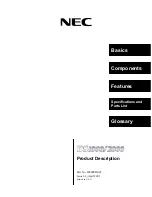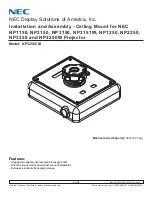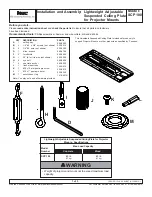
P a g e
|
6
ENERGIZER
BATTERY
MANUFACTURING
VERSION
1.2
Figure
4:
Comparison
of
Discharge
Curves
at
50
mW
Continuous
0.4
0.6
0.8
1.0
1.2
1.4
1.6
0
5
10
15
20
25
30
35
40
45
Vo
lt
ag
e
(V
)
Discharge
Time
(hrs)
Lithium
AAA
Alkaline
AAA
Alkaline
AAAA
Zinc
Air
PP355
NiMH
AAA
The
impedance
of
Energizer
Zinc
Air
Prismatic
batteries
is
higher
than
similar
volume
Alkaline
batteries,
and
it
decreases
slightly
through
the
life
of
the
battery.
The
impedance
should
not
impact
battery
performance
at
low
to
moderate
discharge
rates.
At
higher
rate
discharges,
this
higher
impedance
will
reduce
operating
voltage
and
delivered
energy.
1.4
‐‐
Zinc
Air
Prismatic
Battery
Sizes
Energizer
Zinc
Air
Prismatic
batteries
provide
an
ideal
form
factor
for
devices
with
a
thin
profile.
The
family
of
battery
sizes
is
shown
in
Figure
5
,
ranging
from
AAA
Alkaline
volume
equivalent
to
½
the
AAAA
Alkaline
volume
equivalent.
Energizer
Zinc
Air
Prismatic
battery
nomenclature
is
determined
by
the
IEC
standard.
The
first
‘P’
indicates
Zinc
Air
chemistry,
the
second
‘P’
indicates
the
prismatic
form
factor,
the
first
two
digits
represent
the
diagonal
in
mm,
and
the
last
digit
is
the
battery
height
in
mm.
For
example
the
PP355
has
a
35
mm
diagonal
distance
and
a
height
of
5
mm.
Figure
5:
Zinc
Air
Prismatic
Battery
Sizes
PP425
PP355
PP255
Length
(mm)
36.0
32.2
22.6
Width
(mm)
22.0
14.7
10.3
Thickness
(mm)
5.0
5.0
5.0
Volume
(cm
3
)
3.96
2.37
1.16
Cell
Weight
(g)
11.7
6.8
3.4
Continuous
Rate
Capability
<
200
mW <
100
mW <
50
mW
Capacity
Rated
(mAh)
3600
1800
720


































